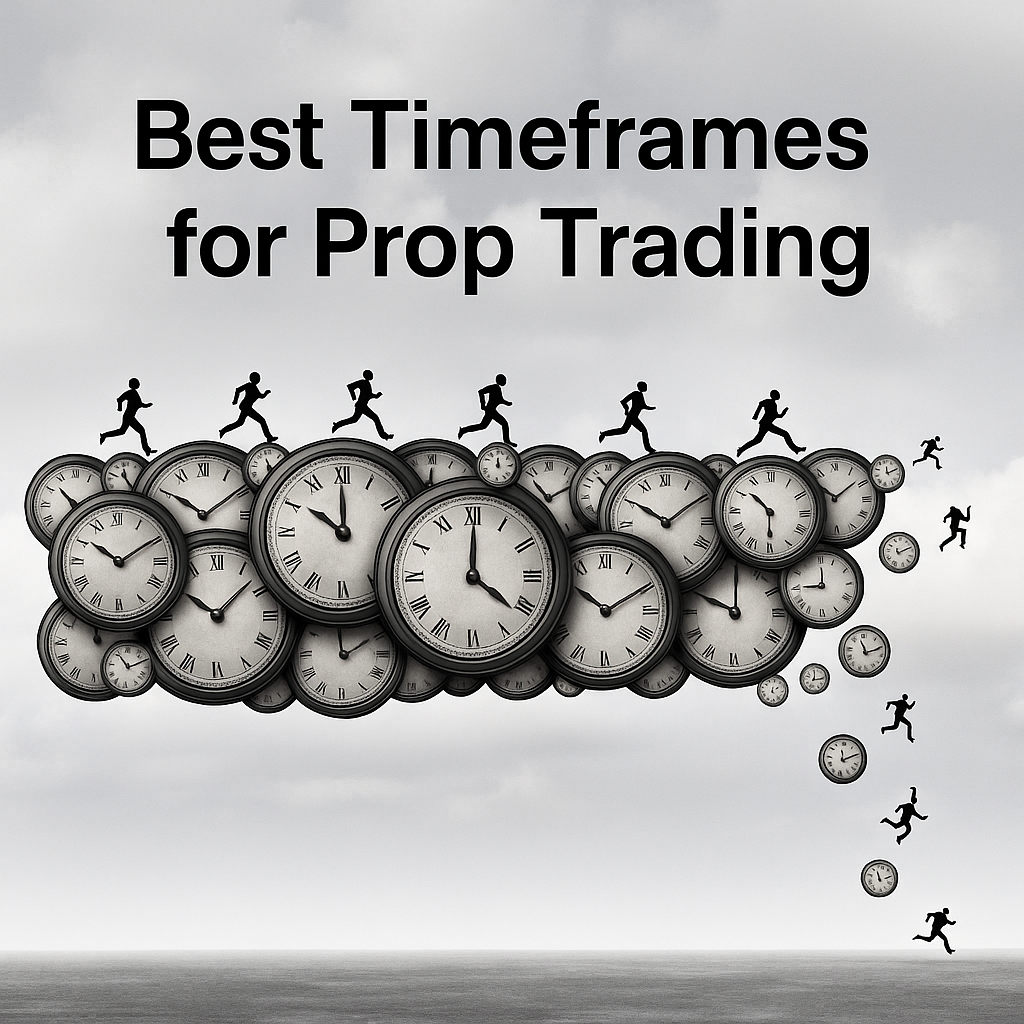Best Timeframes to Use in Prop Trading
Selecting the best timeframes for prop trading is one of the most critical decisions a trader can make. Whether you’re scalping, day trading, or swing trading, your timeframe influences everything—from entry signals to how long you hold a trade. At Larsa Capital, traders are encouraged to find a timeframe that suits their psychology, lifestyle, and trading style.
In this comprehensive guide, we’ll explore how different timeframes impact trading outcomes and how to choose the one that aligns with your goals.
Understanding Timeframes in Trading
In prop trading, a timeframe refers to the period a single candlestick or price bar represents on a chart. For example, on a 1-hour chart, each candlestick shows price action for one hour. Timeframes range from ultra-short-term (like 1-minute) to long-term (like weekly or monthly).
Each timeframe presents a unique perspective. Shorter ones show price noise and allow rapid entries and exits, while longer timeframes filter out volatility and provide broader trends. Understanding the role of each is essential before choosing one for your strategy.
Why Timeframe Choice Matters
Your timeframe affects multiple aspects of trading, including:
-
Trade frequency: Lower timeframes mean more trades.
-
Risk exposure: Longer timeframes often require wider stop losses.
-
Decision-making speed: Shorter frames demand fast reactions.
-
Emotional strain: Rapid charts can lead to stress and overtrading.
Therefore, matching your personality to your timeframe is as important as any technical indicator. Many traders fail not because of their strategy, but because they operate on a timeframe that doesn’t suit them.
Best Timeframes for Prop Trading Success
1. Scalping: 1-Minute to 5-Minute Charts
Scalping requires precision and speed. The 1-minute and 5-minute charts are ideal for this style. These timeframes allow scalpers to exploit tiny price movements, often aiming for just a few pips per trade.
Pros:
-
High trade volume.
-
Quick feedback on performance.
Cons:
-
Requires strong discipline and lightning-fast execution.
-
Emotionally demanding and often stressful.
Scalping is best suited for experienced traders who can remain focused and calm under pressure.
2. Day Trading: 15-Minute to 1-Hour Charts
For traders who prefer a more balanced approach, 15-minute to 1-hour charts offer opportunities to catch daily price trends. This is often seen as the middle ground between high-frequency and swing trading.
Advantages include:
-
Fewer trades with higher quality setups.
-
Less exposure to overnight risk.
-
Clearer technical patterns.
Because day traders open and close trades within the same day, these timeframes help identify actionable moves without excessive noise.
3. Swing Trading: 4-Hour to Daily Charts
If you prefer holding trades for several days or even weeks, then 4-hour and daily charts may be the best timeframes for prop trading in your case. These charts show clearer trend direction and reduce emotional overtrading.
Benefits:
-
Reduced time in front of the screen.
-
Smoother trends and fewer false signals.
-
More time to analyze and plan trades.
However, swing trading also means dealing with overnight and weekend gaps, which must be managed with solid risk control.
4. Position Trading: Weekly to Monthly Charts
Although not common in most prop trading models, weekly and monthly timeframes appeal to long-term traders or those integrating prop trading with other commitments. These charts capture major economic shifts and macro trends.
While Larsa Capital emphasizes active trading, understanding long-term timeframes can still enhance your market perspective—even if you’re not trading on them directly.
How to Choose the Right Timeframe
When selecting your timeframe, consider these factors:
-
Your lifestyle: Do you have time to monitor trades every hour?
-
Your strategy: Momentum strategies work well on shorter timeframes, while mean-reversion might suit higher ones.
-
Your psychology: If you panic during drawdowns, longer timeframes might offer more stability.
-
Your experience level: New traders often perform better on higher timeframes, where setups are clearer and less reactive.
Transitioning between timeframes should be intentional. Many traders begin with daily charts to learn pattern recognition and risk control before experimenting with faster charts.
Multi-Timeframe Analysis
You don’t have to stick to just one timeframe. Many successful traders use multi-timeframe analysis, where they analyze the broader trend on a higher timeframe and find entries on a lower one.
For example:
-
Use the 4-hour chart for trend direction.
-
Drop to the 15-minute chart for entry points.
This method helps align trades with broader market context, improving the probability of success while still providing precision in execution.
Mistakes to Avoid When Selecting Timeframes
Here are some common pitfalls:
-
Switching timeframes mid-trade: This often leads to confusion and poor decision-making.
-
Ignoring market context: A pattern that works on one timeframe may not apply to another.
-
Overtrading on short timeframes: The temptation to act constantly can harm discipline.
Traders should build their approach around consistency. Changing timeframes based on emotion or after a loss can quickly derail performance.
Best Timeframes for Prop Trading: Final Thoughts
Choosing the best timeframes for prop trading is a deeply personal decision that should reflect your strategy, risk tolerance, and emotional comfort. There’s no one-size-fits-all answer. Some traders thrive on 1-minute charts, while others find success on daily candles. What’s important is alignment—your timeframe should amplify your strengths, not expose your weaknesses.
Larsa Capital encourages traders to explore different styles through its structured challenge process. By testing strategies across various timeframes in a risk-managed environment, traders can develop confidence and consistency.
Whether you’re scalping or swinging, understanding your optimal timeframe is a key step toward long-term profitability in prop trading.

